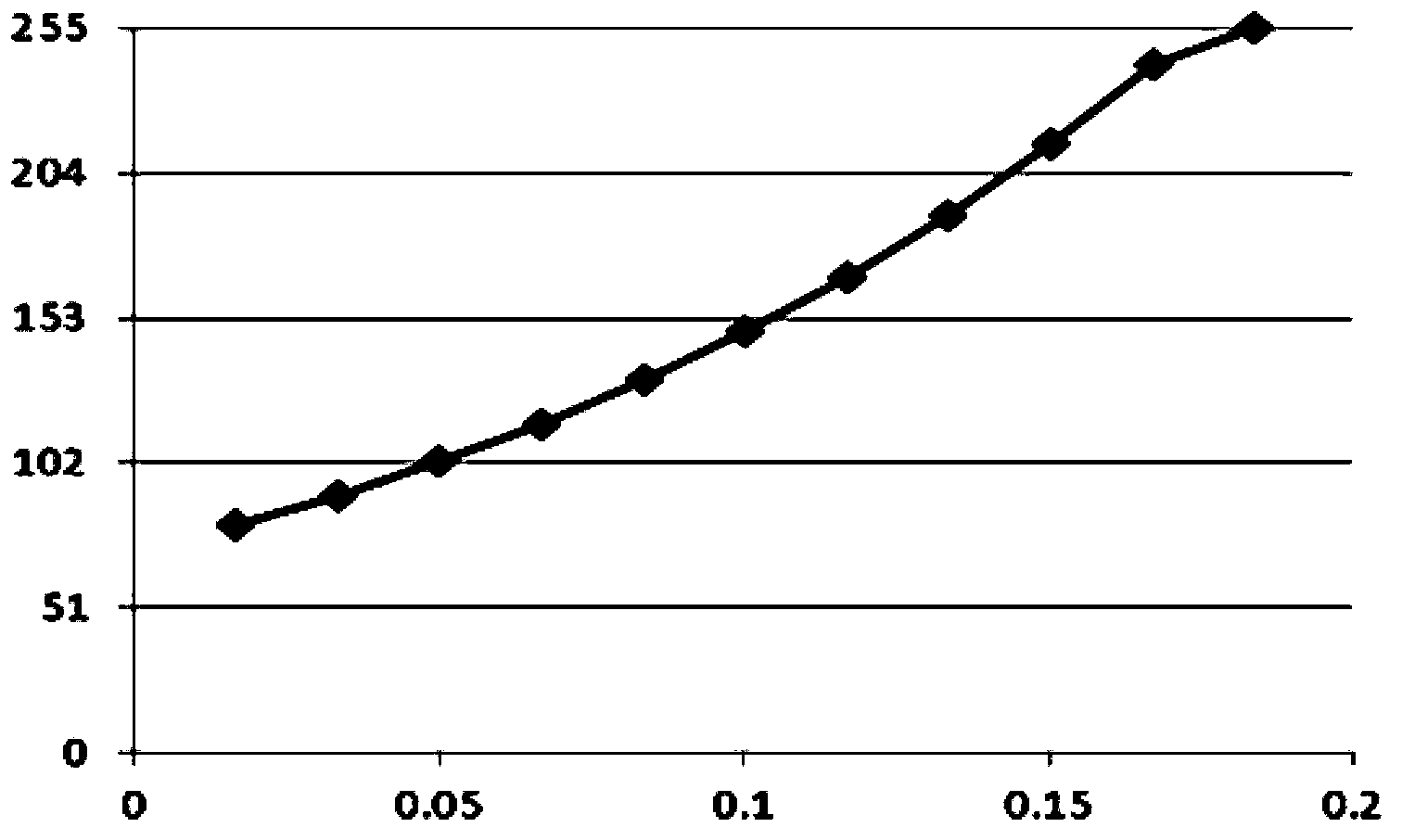Method, device and terminal for adjusting screen backlight brightness
A backlight brightness, screen technology, applied in the field of communication, can solve problems such as changes
- Summary
- Abstract
- Description
- Claims
- Application Information
AI Technical Summary
Problems solved by technology
Method used
Image
Examples
no. 1 approach
[0126] The first embodiment: the screen backlight brightness and ambient light brightness of the current frame are considered at the same time.
[0127] Let N=0.0167*200, M=0.0167*40, where 0.0167 is the time per frame at a frequency of 60 Hertz (HZ). It can be understood that when the frequency of the screen changes, the time of each frame also changes; and 200 and 40 are empirical coefficients, which can be a certain number between 10-1000 as the frequency and other parameters change, so we can get The iterative formula is:
[0128] For brightness boosting process: X n+1 =Min(X n +0.0167*200*X n / 255*L^(1 / 4), B), calculated once per frame, when X n+1 =B stop.
[0129] For the process of reducing brightness: X n+1 ’=Max(X n ’-0.0167*40*X n ’ / 255*L’^(1 / 4), B’), calculated once per frame, when X n+1 '=B' to stop.
[0130] Scenario 1: In the current indoor lighting environment, the brightness of the screen backlight is 80 at this time. If the brightness of the ambient ...
no. 2 approach
[0139] The second implementation manner: only the screen backlight brightness of the current frame is considered.
[0140] Assuming N=0.0167*200, M=0.0167*40, the iterative formula can be obtained as:
[0141] For brightness boosting process: X n+1 =Min(X n +0.0167*200*X n / 255, B), calculated once per frame, when X n+1 =B to stop.
[0142] For the process of reducing brightness: X n+1 ’=Max(X n ’-0.0167*40*X n ’ / 255, B’), calculated once per frame, when X n+1 '=B' to stop.
[0143] Scenario 1: In the current indoor lighting environment, the brightness of the screen backlight is 80 at this time. If the brightness of the ambient light is 10000lux outdoors, the brightness of the screen backlight will rise to 255. The gradual change process at this time (from the initial brightness of 80 to the target brightness of 255) is as follows Figure 7 As shown, it only takes 1.5 seconds to complete.
[0144]Only considering the screen backlight brightness of the current frame ...
no. 3 approach
[0152] The third implementation manner: only the brightness of the ambient light is considered.
[0153] Assuming N=0.0167*40, M=0.0167*10, the iterative formula can be obtained as:
[0154] For brightness boosting process: X n+1 =Min(X n +0.0167*200*L^(1 / 4), B), calculated once per frame, when X n+1 =B stop.
[0155] For the process of reducing brightness: X n+1 ’=Max(X n ’-0.0167*40*L’^(1 / 4), B’), calculated once per frame, when X n+1 '=B' to stop.
[0156] Scenario 1: In the current indoor lighting environment, the brightness of the screen backlight is 80 at this time. If the brightness of the ambient light is 10000lux outdoors, the brightness of the screen backlight will increase to 255. The gradual change process at this time (from the initial brightness of 80 to the target brightness of 255) is as follows Figure 11 As shown, it only takes 0.5 seconds to complete.
[0157] Since only the brightness of the environment is considered, the rising and falling speed o...
PUM
 Login to View More
Login to View More Abstract
Description
Claims
Application Information
 Login to View More
Login to View More - R&D
- Intellectual Property
- Life Sciences
- Materials
- Tech Scout
- Unparalleled Data Quality
- Higher Quality Content
- 60% Fewer Hallucinations
Browse by: Latest US Patents, China's latest patents, Technical Efficacy Thesaurus, Application Domain, Technology Topic, Popular Technical Reports.
© 2025 PatSnap. All rights reserved.Legal|Privacy policy|Modern Slavery Act Transparency Statement|Sitemap|About US| Contact US: help@patsnap.com



